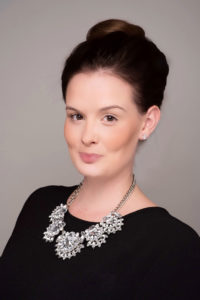Alice Cameron
 Digital Asset Manager, Alice Cameron, clearly understands that every system is different, and there’s no definitive resource. Respecting the uniqueness of each DAM system will help improve the end user-experience.
Digital Asset Manager, Alice Cameron, clearly understands that every system is different, and there’s no definitive resource. Respecting the uniqueness of each DAM system will help improve the end user-experience.
What companies/organizations have you worked for as a DAM professional? What was your role at each?
When I decided to pursue my MLIS, specializing in Archives & Cultural Heritage, I really never expected to become a “DAM Professional”! I dove into the profession at McDonald’s Global Headquarters as a Metadata Specialist, working with multiple DAM systems. My role really encompassed every area of DAM management: user relations, backend testing, troubleshooting, taxonomy & metadata schemas, and later on migration to a new tool. I left McDonald’s to pursue my career as Digital Asset Manager & Head Digital Archivist for Northwestern University, in the Office of Global Marketing and Communications, where I work with a single DAM system. At Northwestern, I’ve brought our “MDAM” (Marketing DAM) into existence; from customization to implementation, with daily oversight to streamline the integration of content from 36 marketing units within our schools & departments.
How do you describe digital asset management to others?
I think most DAM professionals can agree – we love our jobs, but explaining what we do can take some time. I usually say, “You know when you want to find something on Google, and sometimes it takes a while and you have to mess around with your search terms, and sometimes you get exactly what you want right away? I make that happen for my organization’s content.” It doesn’t get into the full depth of rights and asset management, but it gives friends and colleagues an idea they can relate to. Usually people ask how my Library Science degree comes into play, and I explain that I’m still a librarian, I’m still an archivist, I’m making content and information accessible to the end user, and doing my best to make that process as seamless as possible.
How did you learn DAM? Any recommended sources?
I first learned about DAM in my time at Dominican University, and I consolidated that knowledge with on-the-job experience. Every system is different; there’s no definitive resource, every system is unique, and collaboration with your vendor along with working through the complexities of your solution is essential to becoming a DAM expert.
What’s the most important thing for someone new to DAM to understand about DAM?
The complexities of it. From the initial implementation to daily use, there’s always something to fix, to improve, to work on. DAM is not a self-contained solution that can run on its own. DAM isn’t “outside” of librarianship or physical assets anymore. You’ll get out of it what you put into it, and you have to put quite a lot of work into it. Your end users are the single most important measure of success in DAM. If their work life is easier because of DAM, you’re doing something right. I am constantly asking my end users for recommendations or suggestions for the tool. I always tell them nothing is too far-fetched technology wise. I put every new idea on my wish list, and if it’s not something that’s technologically possible yet, I put it on our vendor’s roadmap.
If you weren’t doing DAM as a career, what would you be doing?
Probably working more closely with physical archives again. Or volunteering at an animal sanctuary somewhere.
What is your ongoing greatest challenge with DAM?
My greatest ongoing challenge with digital asset management is that there are only 24 hours in a day. It seems as though there’s never enough time.
What is your vision for DAM? What will it look like in 5 years?
I’d like to see stronger integration with other platforms. There’s a massive disconnect in institutional DAM tools (usually as a result of there being a variety of different vendors and processes). I see huge storage improvements in the future, too.
What was your biggest mistake with regard to DAM?
I got to a point where I was working 12-14 hours a day, 6 days a week, and eventually I realized DAM is a process; it’s never going to be “completed.” If I’d gone on working like that forever, it would have driven me mad! Prioritizing is key.
What was your biggest success with regard to DAM?
My approach to implementing and maintaining MDAM at Northwestern. It was the first DAM where all of my decisions were brought to life. It’s so important to have a close relationship with your vendor. You’ll never get functionalities or improvements that you don’t ask for, and I’ve been really lucky to work with a great vendor, who consistently take my requests and make them a reality. Our tool has already evolved so much in the past year. Constant emails and weekly vendor catch-ups make all the difference when they result in incredible feedback from your end users.
This interview originally appeared on DAM Guru on Mon, 08 May 2017. For more DAM News interviews, see the interviews index page.
Share this Article:
